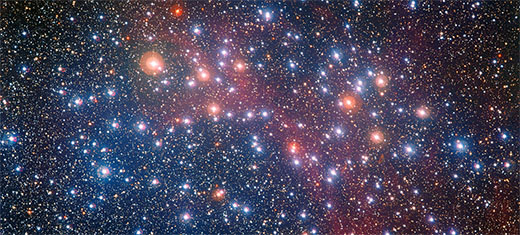| Dec 16, 2021 |
Scientists predict the rotation periods of stars
|
|
(Nanowerk News) The Leibniz Institute for Astrophysics Potsdam (AIP) announces the completion of a major three-publication survey of one of the richest accessible open star clusters. The final study features a method of deriving the rotation periods of stars from just one observation of the stellar activity rather than repeated observations over several weeks which are needed to directly measure the rotation period. The method has possible implications for the determination of the ages of stars.
|
|
Open clusters are star clusters that are made up of stars that were formed at the same time and thus have the same age. The Pleiades and the Hyades, about 100 and 600 million years old, respectively, are open clusters well-known to many. They also happen to be among the nearby clusters richest in different stars. Consequently, their proximity and richness make them important calibrating objects in terms of understanding the evolution of stars, especially those of low mass.
|
|
The open cluster of intermediate age richest in stars – about 2000 – and easily observable is NGC 3532, which covers an area of the sky in the southern hemisphere that is almost twice the size of the full Moon and is visible with the naked eye. AIP scientists have recently completed a comprehensive rotation-activity survey of this 300-million-year-old cluster, enabling detailed insights into how low mass stars evolve between Pleiades and Hyades age.
|
 |
| The young open cluster NCG 3532 consists of more than 2,000 stars. Hot stars are seen in blue, and several high-mass stars have already evolved into cool giant stars, visible in red. The cluster’s large number of member stars make it particularly well-suited to studying the evolution of young stars. (Image: ESO/G. Beccari) (click on image to enlarge)
|
|
The first paper (Astronomy & Astrophysics, "Spectroscopic membership for the populous 300 Myr-old open cluster NGC 3532") specified the stars that actually belong to the cluster – its membership – a prerequisite to any detailed work.
|
|
The second paper (Astronomy & Astrophysics, "Rotation periods for cool stars in the open cluster NGC 3532") was devoted to a detailed study of the rotation of stars in this cluster, and showed significant evolution away from a Pleaides-style distribution, confirming the cluster’s intermediate age, among other rotation insights.
|
|
The now published final study (Astronomy & Astrophysics, "A detailed understanding of the rotation-activity relationship using the 300 Myr old open cluster NGC 3532"), which was conducted with the Anglo-Australian Telescope in New South Wales, is focussed on the magnetic activity of more than 450 cluster stars.
|
|
Magnetic activity involves behaviour of stars such as flaring, spots and coronal ejections. This is routinely probed by examining the stellar spectrum and searching for and measuring excess emission in parts of the spectrum, which clas¬sifie¬s these stars as magnetically active stars, and defines the activity level of the particular star.
|
|
The richness of the cluster, together with the derivation of the stellar rotation periods allows new and de¬tailed insights into magnetic activity of specific stellar populations within the cluster. In particular, this enabled the scientists to construct an extremely well-defined relationship between rotation and activity.
|
|
In fact, the relationship constructed was good enough to predict rotation periods for a large number of stars. It was then possible to identify and confirm the true rotation periods of the stars from the photo¬metric data, which means taking repeated images of the same stars and measuring the minute changes in brightness of each star as spots on the star rotate into and out of view.
|
|
This marks the first time this has been done on such a scale. The work shows that constructing such relationships allows one to predict the periods, which then permit the ages of relevant stars to be derived.
|
|
Dr Dario Fritzewski, first author of the now published study, emphasises: “Crucially, the activity can be measured with just one telescopic observation, rather than the repeated measurements needed over weeks and months to derive rotation periods.”
|
|
Dr Sydney Barnes, head of the group Stellar Activity at AIP, adds: “In the future, this will permit the ages of many stars to be derived, including those outside clusters – so-called field stars. This could potentially be very useful in constructing astronomical chronologies, allowing astronomical events to be time-tagged.”
|

